Galas & Gabfests
“Two of One” catapults Star Trek: Picard into the “action-advice” genre.
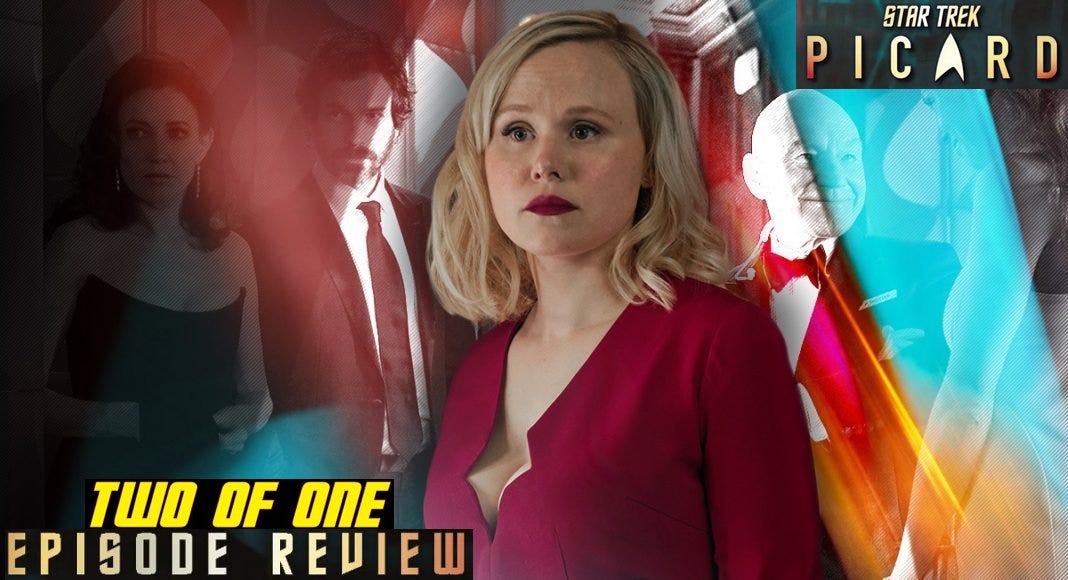
Star Trek: Picard
“Two of One”
Season 2, Episode 6
Written by Cindy Appel & Jane Maggs
Directed by Jonathan Frakes
Starring Patrick Stewart, Orla Brady, Isa Briones, Evan Evagora, Michelle Hurd, Alison Pill, Jeri Ryan, Brent Spiner, and Santiago Cabrera
Guest Starring Penelope Mitchell, Sol Rodriguez, and Annie Wersching
Special Guest Star John de Lancie
38 minutes
Original broadcast 7 April 2022
1. Mixing & Matching
With “Two of One,” Star Trek: Picard continues a notable trend: shearing several minutes from its predecessor’s runtime (in this case, six) to offer Season 2’s shortest entry yet. Viewers who suspect that the series, with this 38-minute outing, enters sitcom territory aren’t far wrong considering that “Two of One” attempts more humor than all previous second-season episodes combined. This installment’s tone, thanks to nice work by co-writers Cindy Appel and Jane Maggs, swings—sometimes wildly—from light comedy to earnest philosophizing to gonzo action with nary a hiccup or hurdle along the path.
In a season ripe with danger, death, and doom, taking a break for an old-fashioned romp helps Picard’s characters and viewers get their bearings, catch a breath (or two), and re-orient themselves as the journey toward cosmic calamity—thanks to the machinations of John de Lancie’s resident trickster Q—marches inevitably onward. Time itself continues to unravel, but why let this catastrophe prevent Jean-Luc Picard (Sir Patrick Stewart) and his fellow travelers from enjoying themselves even if utter destruction looms around every corner? What sourpuss would begrudge this beleaguered band of adventurers the chance to let down their hair, metaphorically speaking, despite the specter of universal destruction bearing down on them?
Who, I ask?
Who?!
Certainly not showrunner Terry Matalas, the man bringing to Star Trek: Picard the same sense of fun evident throughout his earlier series, namely 12 Monkeys (2015-2018), the SyFy Channel’s four-season adaptation of Terry Gilliam’s 1995 film Twelve Monkeys. No matter how grim this program’s story (about humanity attempting to recover from a ruinous pandemic) becomes during its 47 episodes, 12 Monkeys—co-created by Matalas with Picard consulting producer Travis Fickett—never ignores even small moments of humor and human connection that leaven its dystopian portrait of the world trembling on the edge of extinction after the fictional Kalavirus, starting in the year 2017, devastates our species.
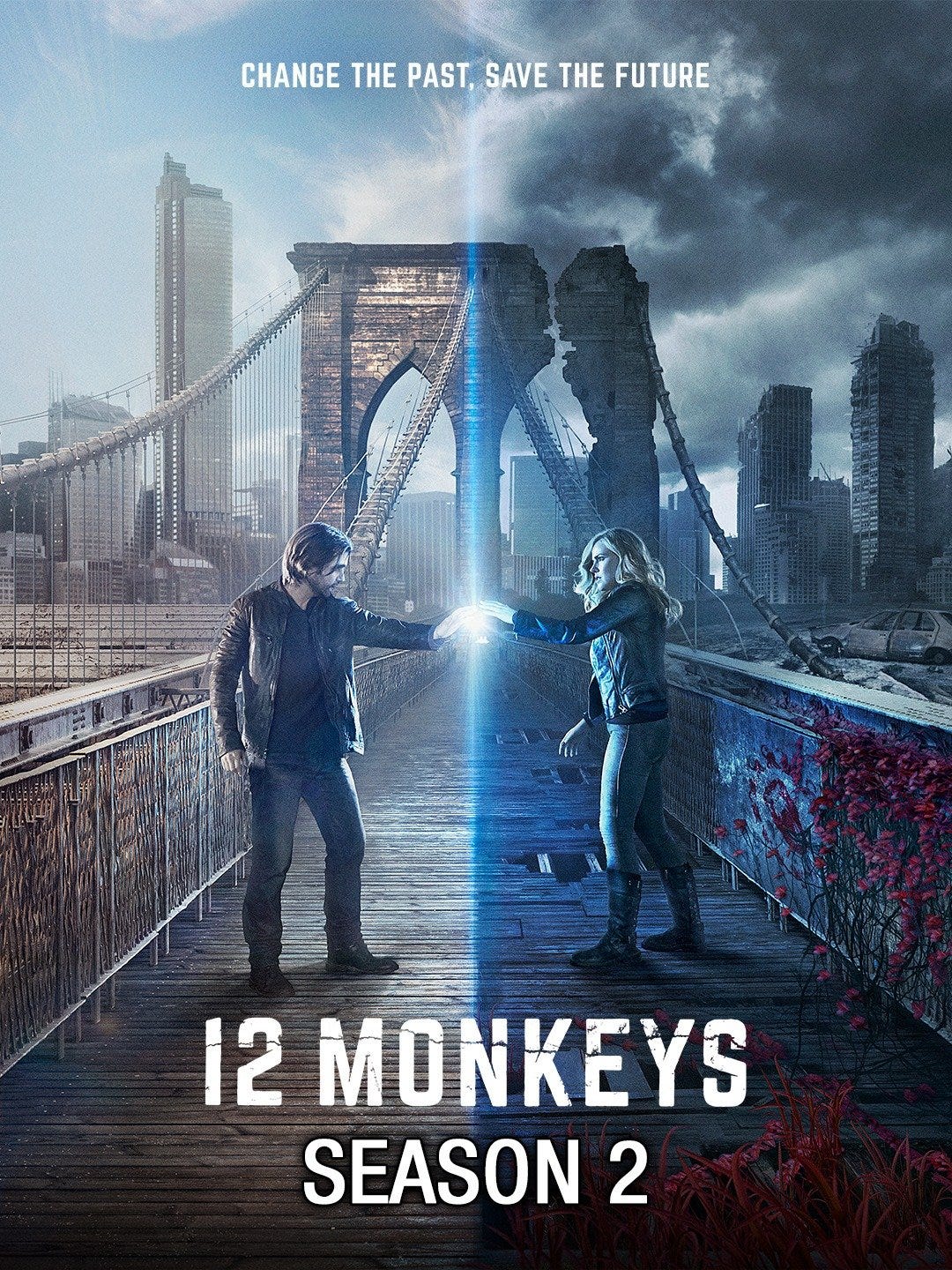
12 Monkeys, for anyone paying attention, now seems prescient, with its virulent-virus narrative transforming this program into a fascinating—if troubling—series to revisit as the COVID-19 pandemic persists, making Matalas’s choice to bring similar sensibilities to Picard a boon that, in the best Star Trek tradition, connects Picard to urgent real-world issues. Some so-called fans have voiced their opposition to this development since Season 2 began, although they’ve muttered similarly unimaginative comments since Star Trek: Discovery premiered in September 2017, inaugurating the era now known as New Trek that extends to the present day and, indeed, thrives despite these haters’ abject misreading of the franchise’s history and potential. Their carping about Picard remains, in a word, as misguided as it is tiresome.
Matalas knows from his work on 12 Monkeys that telling a serialized time-travel story permits its creators wide latitude in terms of approach, tempo, and tone. Picard’s sophomore run, no less than all four 12 Monkeys seasons, invites audience members to visit many different moods, plots, and genres while its protagonists attempt to salvage their future, which, as seen in Season 1, finds the United Federation of Planets rediscovering the fundamental values of openness, diversity, and compassion after the choice to resettle millions of Romulans within its space (in the wake of their home planet’s destruction) provokes social tensions—alongside an atavistic and unattractive insularity—that sees Trek’s primary political union tested in ways not experienced since the days of Deep Space Nine’s Dominion War.
Picard Season 2, in its first five episodes, embraces alternate histories, parallel worlds, fish-out-of-water stories, immigration allegories, and balls-to-the-wall action adventure without threatening to exhaust the many other story forms that the program might try on for size. So, all things being equal, why not add “espionage drama” and “movie musical” to this list? Picard, like 12 Monkeys, so freely throws generic tropes into its narrative blender that seeing our heroes crash a glamorous gala hoping to ensure that Jean-Luc’s ancestor Renée Picard (Penelope Mitchell) participates in the historically crucial Europa Mission seems right on point for a show that, by this juncture in Season 2, resembles a tipsy bartender having as much fun with the customers as possible.
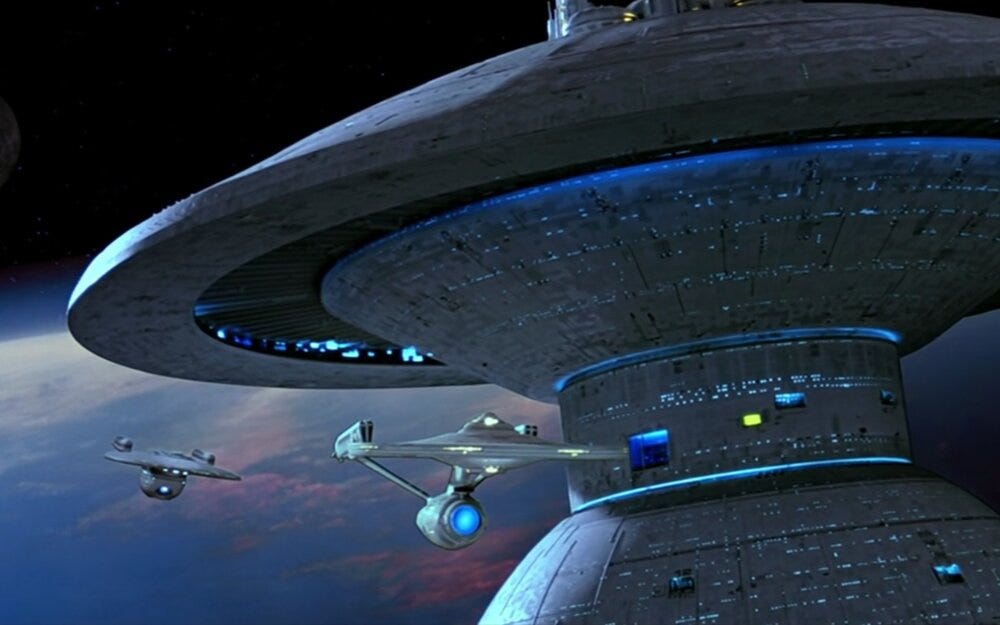
2. Spying & Sighing
To switch culinary metaphors, Team Picard going undercover as elegant party guests in “Two of One” contributes to the confection that Cindy Appel, Jane Maggs and director Jonathan Frakes cook up in an entry unembarrassed to be silly and serious all at once. Doing so recalls 12 Monkeys’s penchant for having its time voyagers so frequently infiltrate party after party that these glitzy detours become as inevitable as the temporal dangers that James Cole (Aaron Sanford), Cassandra Railly (Amanda Schull), and their colleagues routinely hazard.
Whether the corporate shindig that Cole and Railly attend in “Splinter” (the program’s premiere episode); the gaudy 1989 art auction-cum-gala that Cole, Railly, and Jennifer Goines (Emily Hampshire) sneak into during Season 3’s “Causality”; or the 1940 Nazi artifact exhibition-cum-celebration that they subvert in Season 4’s “Die Glocke,” the 12 Monkeys crew can’t resist a good fete no matter how pressing their other objectives are.
My review of “Fly Me to the Moon” notes how this installment’s final act, by setting up “Two of One’s” gate-crashing plot, finds Star Trek: Picard stealing from many excellent predecessors, including 12 Monkeys. Best of all, “Two of One” manifests no anxiety of influence about drawing inspiration from other sources, including superb heist films like Jules Dassin’s Rififi (1955) and Topkapi (1964), or taking pointers from Bruce Geller’s Mission: Impossible franchise (1966-1973 & 1988-1989 on television, 1996 until the present day on film). “Two of One,” indeed, repeats so many M:I beats, moments, and conventions that it qualifies as a distant, spiritual cousin of Geller’s long-running series.
What’s more, Star Trek has dabbled in heist conventions throughout its five-plus decades on the big and small screens, with the most famous example coming in 1984’s Star Trek III: The Search for Spock, the franchise’s third feature film, which sees the command crew of James T. Kirk’s (William Shatner’s) U.S.S. Enterprise (NCC-1701) steal their ship from Earth’s orbital Spacedock station. This marvelous sequence pushes James Horner to compose some of the best Trek music ever recorded while setting a high bar for all future entries, making “Two of One” the latest descendent in a long lineage that includes the Original Series’s “The Enterprise Incident”; The Next Generation’s “Gambit” two-parter; Deep Space Nine’s “Badda-Bing, Badda-Bang”; Voyager’s “Dark Frontier”; and Enterprise’s “Shockwave” two-parter.
“Two of One,” however, nicely twists the heist narrative’s usual plot by making Team Picard’s goal not stealing an object, but instead convincing a person to fulfill her historical responsibilities. If that summary sounds pedantic or boring, rest assured that the episode is anything but thanks to Appel’s and Maggs’s choice to structure this entry around a ticking-clock scenario that plays out nearly in real time, recalling (in conception if not execution) Joel Surnow and Robert Cochran’s counterterrorist thriller 24 (2001-2010 & 2014).
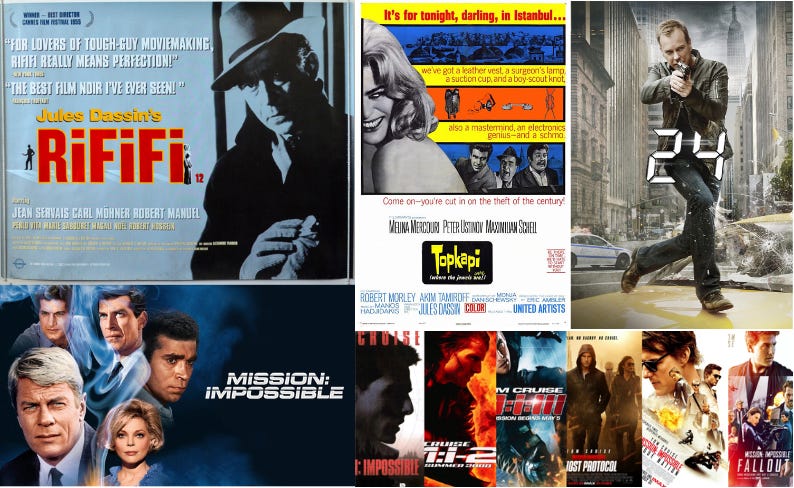
Unlike 24’s rigidly linear storytelling, however, “Two of One” jumps back and forth throughout the evening of the Europa Mission celebration, a party that Renée Picard is required to attend so that this project’s major donors can hobnob with its crew members. The gala offers Jean-Luc a perfect opportunity to ensure that the uncertain Renée—who struggles with feelings of depression and inadequacy despite her brilliance and resilience—pilots the mission to the Jovian moons of Europa and Io, where she will discover a sentient organism crucial to Earth’s ecological survival and the Federation’s eventual birth.
Doing so requires Picard, Agnes Jurati (Alison Pill), Raffi Musiker (Michelle Hurd), Cristóbal Rios (Santiago Cabrera), Seven of Nine (Jeri Ryan), and Tallinn (Orla Brady)—the extraterrestrial “watcher,” also known as a Supervisor, who’s been observing and protecting Renée for two decades—to slip past the event’s security measures. This necessity lets costume designer Christine Bieselin Clark go wild by dressing the men in sharp tuxedos and the women in shimmering gowns, with Jurati’s red dress offering such flattering views of Alison Pill’s figure that Agnes becomes an object of attention from the moment she appears in the party’s ballroom.
This notoriety, as depicted in the final moments of “Fly Me to the Moon,” is intentional. Agnes quickly gets detained by security personnel and taken to their command center, where she must then find a way to upload false identification files into the site’s computer system so that all other Team Picard members can gain admission to the soiree.
What Picard and his compatriots don’t know is that Annie Wersching’s Borg Queen, just before Episode 5’s conclusion, infects Jurati with nanoprobes after Agnes shoots her with a rifle, in the process saving the life of an unlucky French police officer (Ivo Nandi) whom the Queen lures to La Sirena’s crash site. Indeed, “Fly Me to the Moon” closes with Wersching’s Borg Queen sitting next to Agnes in the gala’s command center, praising the team’s plan to get Jurati deliberately apprehended, and smiling in a way that should concern us all.
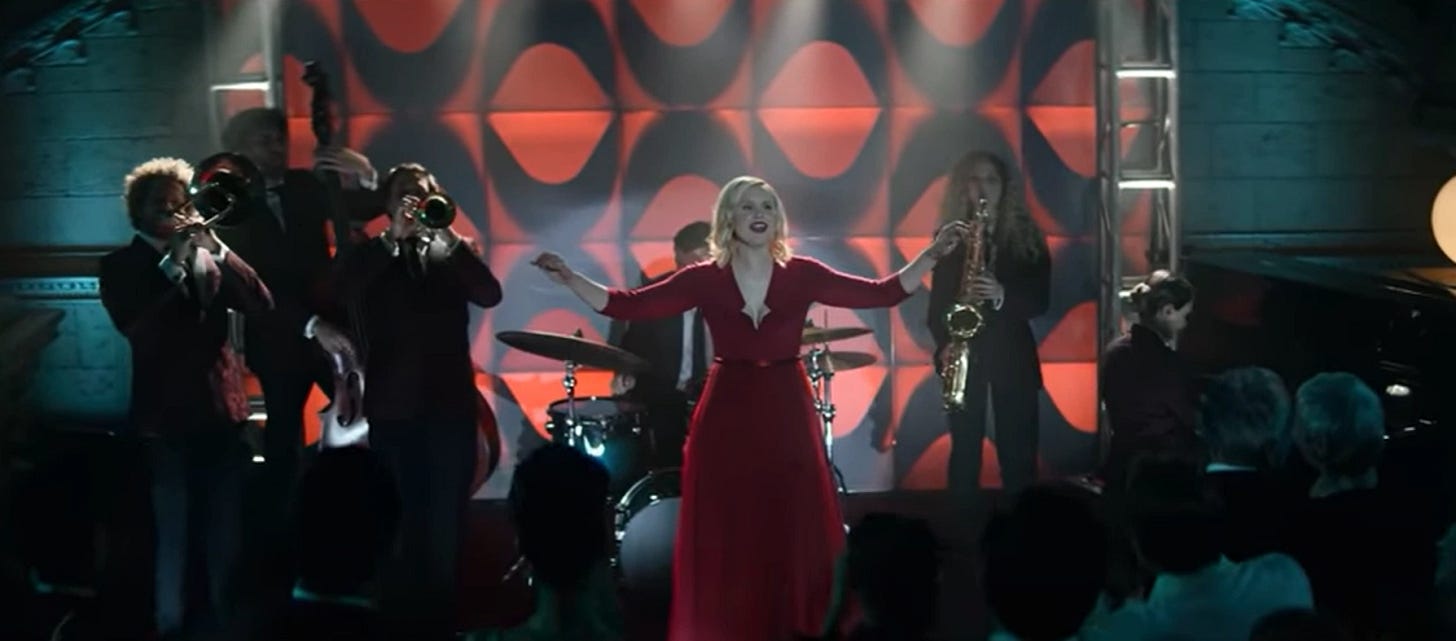
3. Sitting & Singing
And concern us it does. The Queen wastes no time in using her enhanced strength to help Agnes break the handcuffs that chain her to a bench near, but not near enough, the command center’s computers.
She also convinces Jurati to indulge one of the most absurdly enjoyable diversionary tactics ever seen in a Trek production. Killing the entire gala’s lights allows Picard to escape the security men tracking him throughout the assembled crowd, but not before the venal Adam Soong (Brent Spiner) confronts Jean-Luc at Q’s behest, threatening to end the good admiral’s mission to the past along with his life. Picard, however, slips upstairs, where Renée has retreated to avoid becoming overwhelmed by the endless stream of people demanding her time and attention. The Queen then sends a “nano-electronic pulse” that activates a spotlight somewhere above the ballroom’s stage.
Yes, friends, we’re now treated to the sights and sounds of Agnes Jurati crooning “Shadows of the Night,” the 1982 Pat Benatar song that, in “Two of One,” becomes so effective a solo that the band picks up its melody to accompany Agnes while the spotlight follows her from the mezzanine down to the stage, where Jurati commands everyone’s rapt attention with her jazz-infused cover of Benatar’s single.
I find this interlude so fun, so charming, and so bonkers that I buy the narrative implication (certainly no explanation is given) that the Borg nanoprobes pervading Agnes’s bloodstream allow the Queen (who occupies part of Agnes’s consciousness) to control the spotlight’s movements, just as I can accept, at least during the two minutes this spectacle unfolds onscreen, that Jurati’s confident stage presence motivates the band’s members to join her rather than questioning why a woman they’ve never met chooses to raise her voice in song during the middle of a blackout.
Your mileage with this development will vary depending upon your tolerance for left-field plot gyrations that disrupt expectations about how this episode’s storyline will (and, perhaps, should) unfold, but no one can accuse Cindy Appel and Jane Maggs of whipping “Two of One” down the same well-trodden narrative paths we’ve hiked a hundred or a thousand times before.
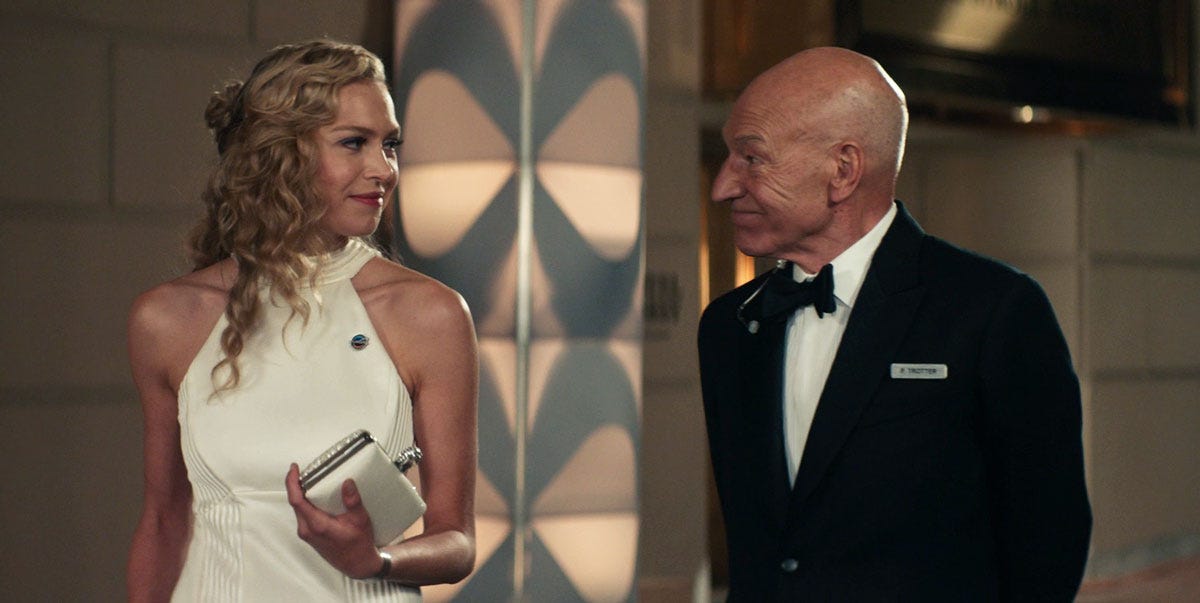
No, “Two of One” simply pauses for a few moments to appreciate Agnes putting her best foot forward—literally—in a performance so enjoyed by Jurati that the resulting endorphin rush allows the Queen to take full control of Agnes’s mind and body. The Queen claims doing so was her plan all along, yet even if we don’t quite believe this assertion, Pill’s performance throughout Season 2 has emphasized Agnes’s increasing loneliness and disconnection from the world around her, which makes her a prime candidate for bonding with the Queen, who nearly went insane when separated from the Borg Collective (as seen in Episode 2, “Penance”).
This development commits Star Trek: Picard to revealing in its Season 2 finale that Episode 1’s never-before-seen Borg Queen—yes, the one clad all in black with fearsome, Dr. Octopus-like tentacles emerging from her back—fuses Alison Pill’s Jurati and Annie Wersching’s cyborg. Her onstage solo in “Two of One,” however, at least permits Picard to pose as the gala’s oldest security guard, to locate Renée, and to engage his distant cousin in a conversation that gives Renée enough confidence to remain a Europa Mission crew member.
Although this outcome is never in serious doubt given Jean-Luc’s penchant for talking people into doing what they know is right and proper (in more episodes of The Next Generation and its four feature films—especially 1996’s Star Trek: First Contact and 1998’s Star Trek: Insurrection—than this review can list), this development seems fresher than it otherwise might thanks to Penelope Mitchell’s and Patrick Stewart’s good work in a scene where Renée gently prods Jean-Luc about his age and Picard wistfully tells Renée how much she reminds him of his mother. “Two of One,” in other words, demonstrates how taking a few precious moments for an earnest, yet emotionally resonant conversation despite racing pell-mell through the rest of its 38-minute running time is perhaps the Trekiest narrative turn that any Trek episode can take, making this installment yet another entry in what we might dub, with our tongues lodged firmly in our cheeks, the “action-advice” genre.
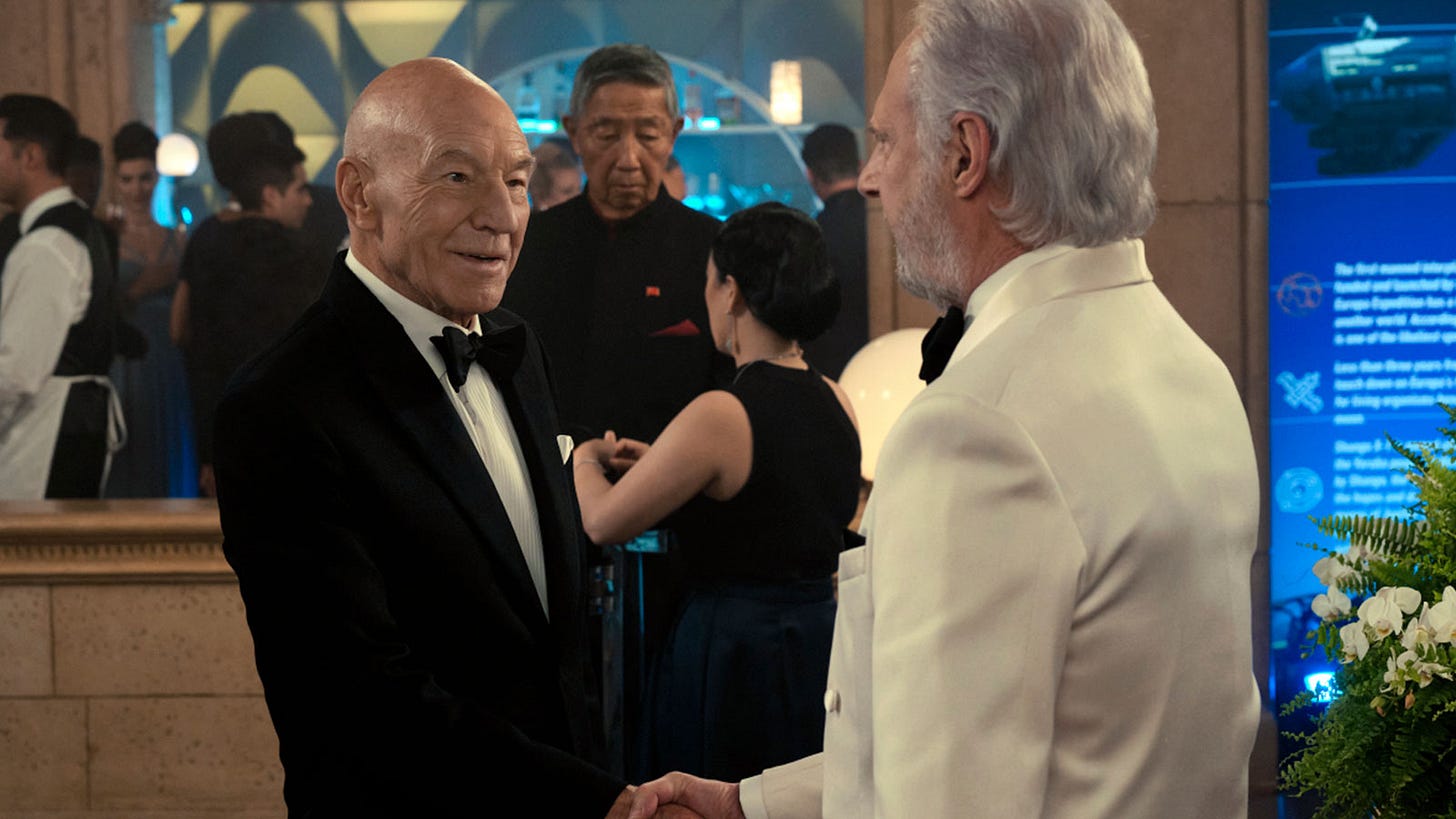
4. Leaving & Living
Appel and Maggs intersperse these gala scenes with flashforwards to Picard receiving treatment in Teresa Ramirez’s (Sol Rodriguez’s) Las Mariposas medical clinic after he’s run down by a car driven by Adam Soong, who’s been asked by Q to kill Renée to ensure that the Confederation future Jean-Luc so desperately hopes to prevent instead comes to pass. Adam, moreover, genuinely seems to enjoy trying to murder both Renée and Jean-Luc, although the latter, who pushes Renée out of danger just in time, cannot avoid the impact of Adam’s vehicle.
These events force Raffi, Rios, Seven, and Tallinn to rush the unconscious admiral to Teresa’s clinic, where she stabilizes Picard’s heart arrhythmia with her defibrillator, only to see this device burn up after coming into contact with the synthetic (“golem”) android body to which Picard’s consciousness was transferred in Star Trek: Picard’s Season 1 finale (“Et in Arcadia Ego, Part 2”).
This frame story—of Picard’s life being imperiled by Adam Soong—finds its bookend in Adam’s daughter Koré (Isa Briones) discovering her life to be false when Adam arrives home, upset by failing to kill Renée, but raving about how she (Koré) is his life’s work. When Adam retires for the evening without answering her questions or calming her alarm about his behavior, Koré begins searching Adam’s computer files, proving that even geniuses sometimes fail to password-protect their digital work (or, perhaps, that Koré easily cracks Adam’s security measures because she’s even smarter than her arrogant father).
Koré finds a terrible truth, one that careful viewers have suspected in roughly equal measure to predicting that Agnes Jurati is / was / will become the Borg Queen. Koré is merely the latest in a long line of genetically engineered “daughter” clones that Adam has given life, only to see them expire due to biological factors that he cannot explain, counteract, or cure. Their names—Persephone, Despoina, Persephatta, and Artemis—recall the mythologically inspired monikers that Adam’s 22nd Century descendant Arik Soong (also played by Spiner) gives to the Augment children that Arik raises in isolation and who, as adults, menace Jonathan Archer’s (Scott Bakula’s) NX-01 crew in Enterprise’s three-part “Borderland” / “Cold Station 12” / “The Augments” (the excellent Season 4 trilogy set, in another bit of timey-wimey Trekian fun, 130 years after—but broadcast 18 years before—“Two of One”), to say nothing of the three android characters (Dahj, Soji, and Sutra) that Briones plays in Picard Season 1.
“Two of One” concludes with Tallinn proposing a “jury-rigged mind meld” that will see her enter Jean-Luc’s psyche thanks to the aid of the “neuro-optic interceptor” device that Supervisors such as herself and The Original Series’s Gary Seven (Robert Lansing) possess. Picard doesn’t regain consciousness despite Teresa healing his physical injuries, leading Tallinn to theorize that some undisclosed psychological trauma prevents Jean-Luc from awakening.
No matter how dubious or invasive this brand of therapy may be, it explicitly sets up Episode 7 as one of those stories beloved by stage and screen drama—and, especially, by televised science-fiction drama—where characters explore a compatriot’s inner life by touring that individual’s mindscape. Yes, they amble around locations that their friend’s (or colleague’s or family member’s) consciousness projects as real physical environments that the visitor can explore (even if these spaces are jumbled and contradictory zones that mimic a troubled mind’s psychological instability).

Yet these possibilities must wait until that entry, worrisomely titled “Monster,” begins. “Two of One” chooses not to overstay its welcome, ending—like predecessor “Fly Me to the Moon”—on another arresting image, namely the Agnes Queen walking down a city street, red dress billowing around and behind her in what promises to be big trouble for all concerned. Who, after all, needs this new Queen making matters worse by assimilating the residents of 2024 Los Angeles?
Who, I ask?
Who?!
Not me, not you, and certainly not Team Picard.
So, my friends, we leave “Two of One” behind after spending 38 enjoyable minutes in the company of friends who traverse different genres, tones, tempos, and moods before entering more fearsome territory.
May the wind be at their (and our) backs.




